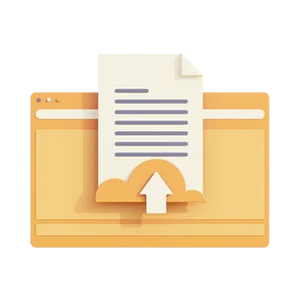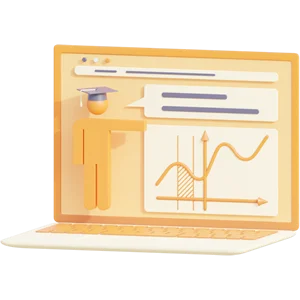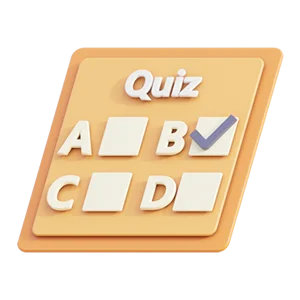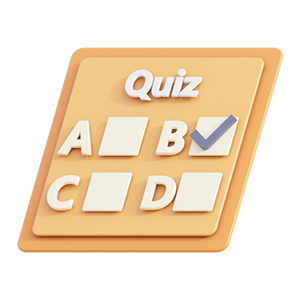HESI EXIT EXAM REVIEW LATEST 2024 ACTUAL EAXM COMPLETE 400 QUESTIONS AND CORRECT DETAILED ANSWERS WITH RATIONALES (VERIFIED ANSWERS) |ALREADY GRADED A+
HESI EXIT EXAM REVIEW LATEST 2024
ACTUAL EAXM COMPLETE 400
QUESTIONS AND CORRECT DETAILED
ANSWERS WITH RATIONALES (VERIFIED
ANSWERS) |ALREADY GRADED A+
1. The home health nurse visits an elderly female client who
had a brain attack three months ago and is now able to
ambulate with the assistance of a quad cane. Which
assessment finding has the greatest implications for this
client's care?
• The husband, who is the caregiver, begins to weep when the
nurse asks how he is doing.
• The client tells the nurse that she does not have much of an
appetite today.
• The nurse notes that there are numerous scatter rugs
throughout the house.
• The client's pulse rate is 10 beats higher than it was at the
last visit one week ago. - ...ANSWER...Ans 3 - The nurse
notes that there are numerous scatter rugs throughout the
house.
Rationale -
Scatter rugs (C) pose a safety hazard because the client can
trip on them when ambulating, so this finding has the greatest
significance in planning this client's care. Psychological
support of the caregiver (A) is a less acute need than that of
client safety. The nurse needs to obtain more information
about (B), but this is not a safety issue. (D) is not a significant
increase, and additional assessment might provide information
about the reason for the increase (anxiety, exercise, etc.).
2. The nurse is digitally removing a fecal impaction for a
client. The nurse should stop the procedure and take
corrective action if which client reaction is noted?
• Temperature increases from 98.8° to 99.0° F.
• Pulse rate decreases from 78 to 52 beats/min. Correct
• Respiratory rate increases from 16 to 24 breaths/min.
• Blood pressure increases from 110/84 to 118/88 mm/Hg. -
...ANSWER...• Pulse rate decreases from 78 to 52 beats/min.
Rationale -
Parasympathetic reaction can occur as a result of digital
stimulation of the anal sphincter, which should be stopped if
the client experiences a vagal response, such as bradycardia
(B). (A, C, and D) do not warrant stopping the procedure.
3. The nurse is providing passive range of motion (ROM)
exercises to the hip and knee for a client who is unconscious.
After supporting the client's knee with one hand, what action
should the nurse take next?
• Raise the bed to a comfortable working level.
• Bend the client's knee.
• Move the knee toward the chest as far as it will go.
• Cradle the client's heel. Correct - ...ANSWER...•Ans -
Cradle the client's heel. Correct
RATIONALE: Passive ROM exercise for the hip and knee is
provided by supporting the joints of the knee and ankle (D)
and gently moving the limb in a slow, smooth, firm but gentle
manner. (A) should be done before the exercises are begun to
prevent injury to the nurse and client. (B) is carried out after
both joints are supported. After the knee is bent, then the knee
is moved toward the chest to the point of resistance (C) two or
three times.
4. A client who has moderate, persistent, chronic neuropathic
pain due to diabetic neuropathy takes gabapentin (Neurontin)
and ibuprofen (Motrin, Advil) daily. If Step 2 of the World
Health Organization (WHO) pain relief ladder is prescribed,
which drug protocol should be implemented?
• Continue gabapentin. Correct
• Discontinue ibuprofen.
• Add aspirin to the protocol.
RATIONALE: Add oral methadone to the protocol -
...ANSWER...Ans 1 - Continue gabapentin
Based on the WHO pain relief ladder, adjunct medications,
such as gabapentin (Neurontin), an anti-seizure medication,
may be used at any step for anxiety and pain management, so
(A) should be implemented. Non-opioid analgesics, such as
ibuprofen (A) and aspirin (C) are Step 1 drugs. Step 2 and 3
include opioid narcotics (D), and to maintain freedom from
pain, drugs should be given around the clock rather than by
the client s PRN requests.
5. The nurse is preparing to irrigate a client's indwelling
urinary catheter using an open technique. What action should
the nurse take after applying gloves?
• Empty the client's urinary drainage bag.
• Draw up the irrigating solution into the syringe.
• Secure the client's catheter to the drainage tubing.
• Use aseptic technique to instill the irrigating solution. -
...ANSWER...ANS - Draw up the irrigating solution into the
syringe.
RATIONALE: To irrigate an indwelling urinary catheter, the
nurse should first apply gloves, then draw up the irrigating
solution into the syringe (B). The syringe is then attached to
the catheter and the fluid instilled, using aseptic technique
(D). Once the irrigating solution is instilled, the client's
catheter should be secured to the drainage tubing (C). The
urinary drainage bag can be emptied (A) whenever intake and
output measurement is indicated, and the instilled irrigating
fluid can be subtracted from the output at that time.
6. Which client care requires the nurse to wear barrier gloves
as required by the protocol for Standard Precautions?
• Removing the empty food tray from a client with a urinary
catheter.
• Washing and combing the hair of a client with a fractured
leg in traction.
• Administering oral medications to a cooperative client with
a wound infection.
• Emptying the urinary catheter drainage bag for a client with
Alzheimer's disease. Correct - ...ANSWER...ANS - Emptying
the urinary catheter drainage bag for a client with Alzheimer's
disease.
Rationale -
possible contact with body secretions, excretions, or broken
skin is an indication for wearing barrier (nonsterile) gloves.
Emptying a urine drainage bag requires the use of gloves (D).
(A, B, and C) do not require gloves.
7. What action should the nurse implement to prevent the
formation of a sacral ulcer for a client who is immobile?
• Maintain in a lateral position using protective wrist and vest
devices.
• Position prone with a small pillow below the diaphragm. •
Raise the head and knee gatch when lying in a supine
position.
Transfer into a wheelchair close to the nurse's station for
observation - ...ANSWER...Ans - Position prone with a small
pillow below the diaphragm.
Rationale -
The prone position (B) using a small pillow below the
diaphragm maintains alignment and provides the best pressure
relief over the sacral bony prominence. Using protective
(restraining) devices (A) is not indicated. Raising the head and
bed gatch (C) may reduce shearing forces due to sliding down
in bed, but it interferes with venous return from the legs and
places pressure on the sacrum, predisposing to ulcer
formation. Sitting in a wheelchair (D) places the body weight
over the ischial tuberosities and predisposes to a potential
pressure point.
Preview document (3 van de 274 pagina's)
Voordelen van Knoowy
€ 42,04
 Niet tevreden? Geld terug
Niet tevreden? Geld terug
 Document direct te downloaden
Document direct te downloaden
 € 0,50 korting bij betalen met saldo
€ 0,50 korting bij betalen met saldo
-
 Ontvang gratis oefenvragen bij document
Ontvang gratis oefenvragen bij document

Specificaties
- School: Chamberlain College Of Nursing
- Opleiding: Hesi Exit Exam
Document
- Rubriek: Tentamens
- Gemaakt op: 05-05-2024
- Type: .pdf
- Pagina's: 274
- Taal: English
Tags
Verkoper
372 documenten geüpload
62 documenten verkocht
1 diensten aangeboden
Hello and welcome to Scholar Master! I'm thrilled to have you here. At Scholar Master, I offer top-tier academic assistance and tutoring for various assignments, quizzes, and examinations, with a guaranteed A+ outcome.
Specializing in key subjects such as psychology, nursing, human resource management, and mathematics, my foremost commitment is delivering top-notch quality to students. I uphold rigorous scholarly standards in all my work, earning recognition as one of the premier gold-rated tutors on Knoowy.
Trust in Scholar Master's services for a superior grade assurance and let’s work together to make your academic goals a reality. Thank you for choosing Scholar Master. I look forward to helping you succeed!
Verdienen aan je samenvattingen?
Vakken van Hesi Exit Exam - Chamberlain College Of Nursing
Meer Hesi Exit Exam ›hesi rn exit ediatric nurse practitioner health education systems, inc. hesi hesi comprehensive predictor hesi critical care hesi entrance hesi exit pn /hesi exit hesi exit rn exam hesi exit rn v1 exam hesi exit rn v1 exam 2022 hesi exit version 3 completed with 100% correct answers latest 2024/2025 brand new!! hesi maternity hesi mental health exam hesi nclex-rn 4th edition mental health hesi pharmacology hesi pharmacology exam practice 250 questions and correct detailed answers |already graded a+ hesi rn comprehensive predictor hesi rn critical care hesi rn exit exam 2022 v3 latest pediatrics hesi rn exit exam with complete questions and answers (100% verified answers) graded a+ med surge 2 hesi final exit exam graded a latest ngn rn nurs nursing
Al meer dan 146.000 tevreden studenten
-
Simone Dijkstra
Juiste plek voor een goeie voorbereiding op je komende toets.
-
febeh
Betrouwbare website. Ik zet er zelf ook samenvattingen op en ik koop er ook.
-
Steffix
Knoowy neemt toch wel wat stress voor de examenperiode weg. De samenvattingen geven een goede houvast bij het studeren waardoor je zekerder wordt van jezelf bij het studeren. Ideaal voor wie in tijdsnood zit of gewoon een extra overzicht wil hebben van het vak.
-
PR
Fijne website voor elke student die hulp nodig heeft bij het leren.
-
Nadia Kasmi
Altijd tevreden over Knoowy! Reeds vele samenvattingen gedownload maar ook geüpload.
-
Jette
Prima website waar veel kennis te vinden is. De website heb ik gevonden door te zoeken naar samenvattingen.
-
omerkx
Samenvattingen zijn eenvoudig te bestellen en te downloaden via de website. Aan te raden.
-
sandervdellen
Knoowy is een zeer goed platform voor samenvattingen en ik zou het aanraden.
 Actie: ontvang 10% korting bij aankoop van 3 of meer items!
Actie: ontvang 10% korting bij aankoop van 3 of meer items!
Actie: ontvang 10% korting bij aankoop van 3 of meer items!









